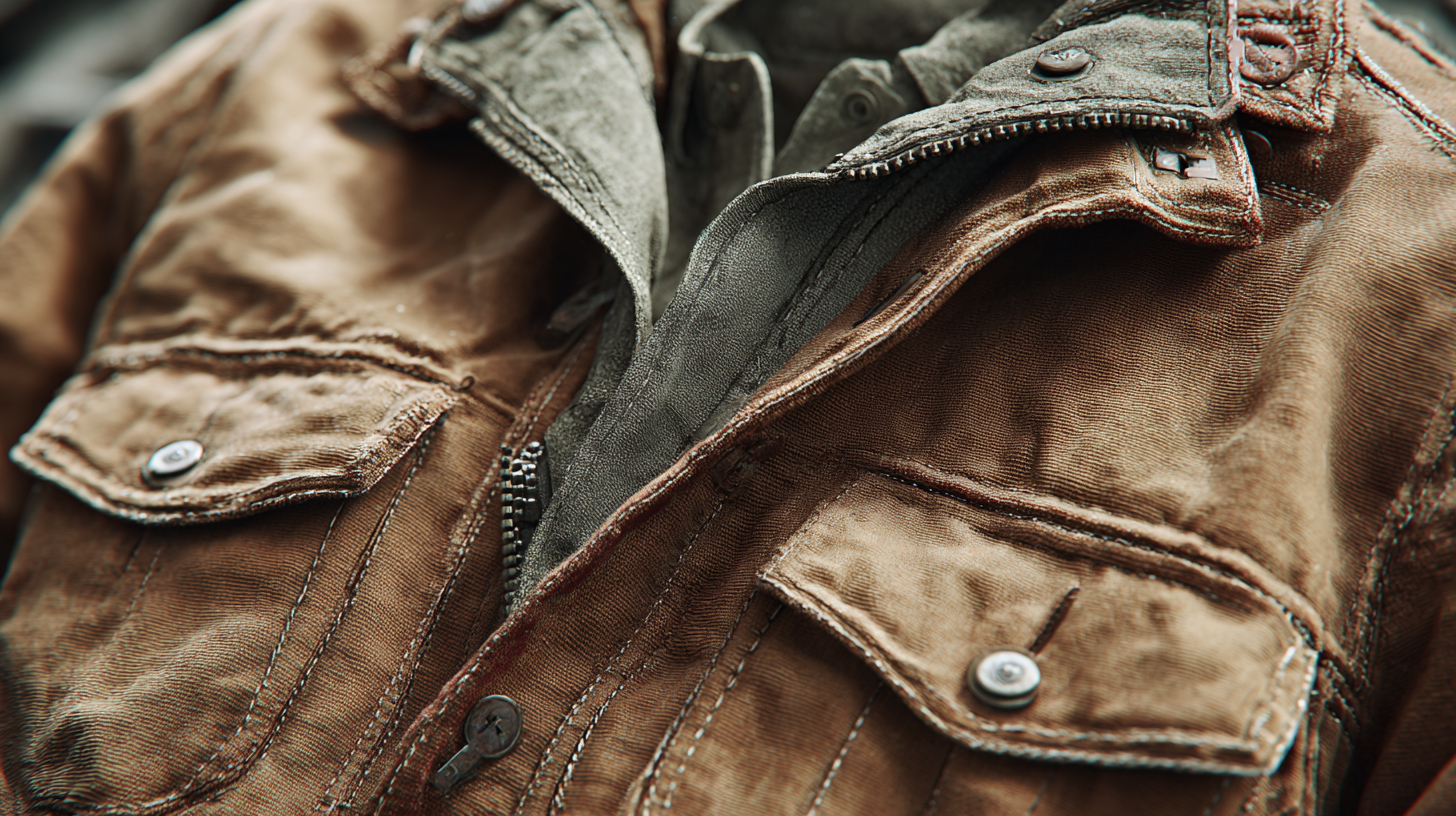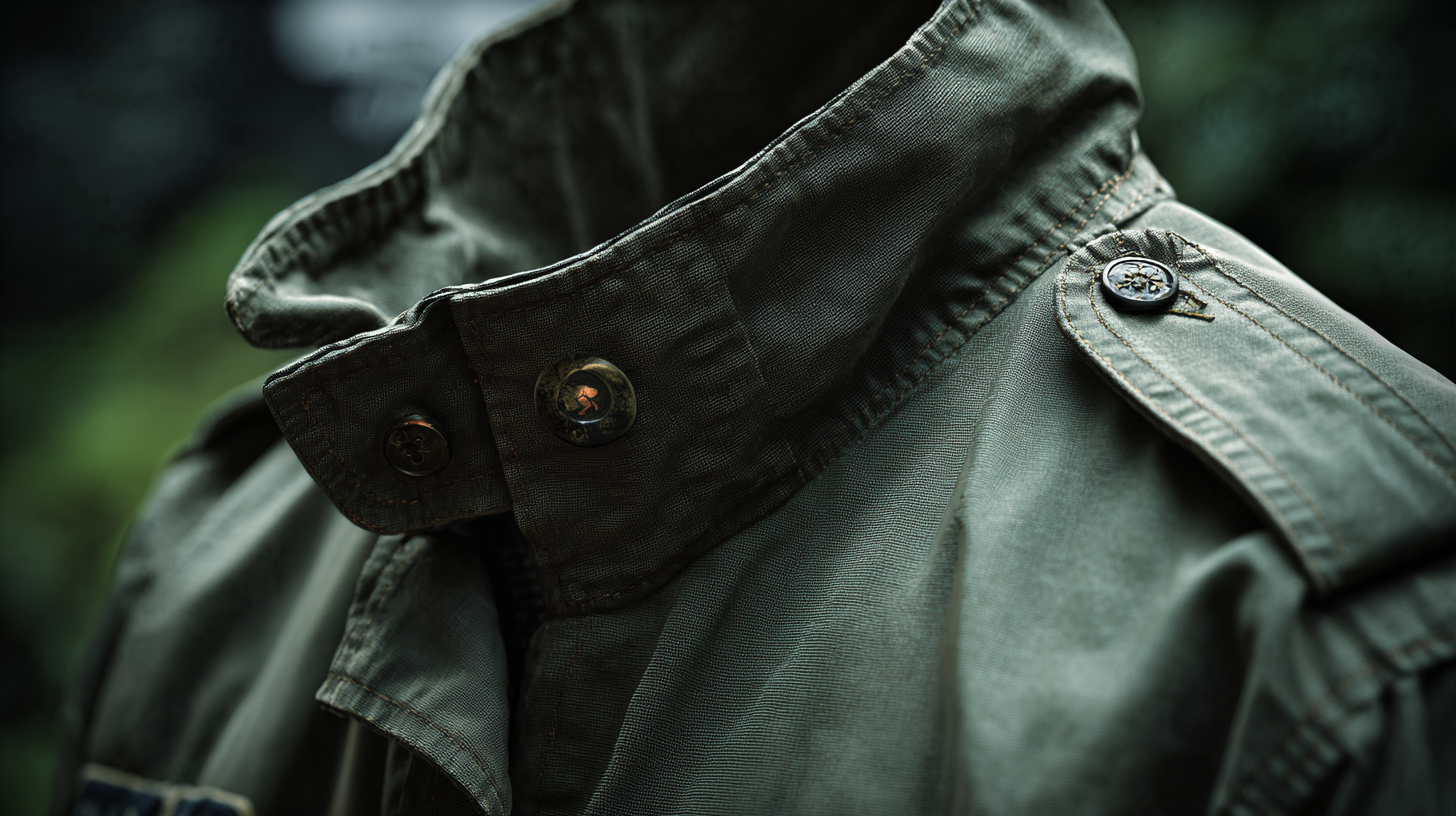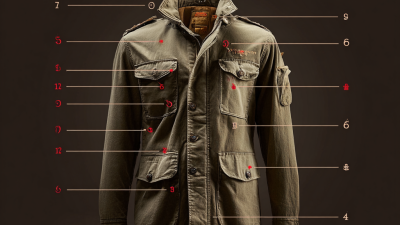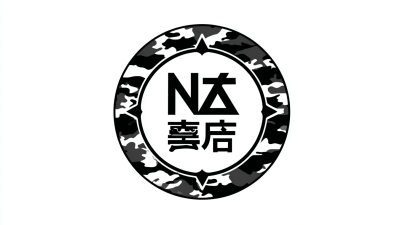The field jacket, a staple in military and civilian wardrobes alike, has undergone significant evolution since its inception in the early 20th century. Originally designed for functionality and durability, the field jacket has adapted to meet the demands of modern style while retaining its practical roots. According to a report from the Fashion Institute of Technology, the outdoor apparel market is projected to grow by 5.3% annually, reflecting a rising interest in versatile outerwear such as field jackets. This has solidified their place not just on the battlefield but also on city streets, appealing to a broad demographic seeking comfort and style. As we delve into the history and evolution of the field jacket, we will uncover its transformative journey from military necessity to a fashionable staple, highlighting how its design adaptations have made it an enduring icon in contemporary fashion.

 The field jacket's journey began during World War II, when it was designed as a practical solution for military personnel facing diverse environmental challenges. The original models, such as the M-65, incorporated durable fabrics and multiple pockets, ensuring soldiers had everything they needed at their disposal. This functional approach made the field jacket not only a reliable piece of military gear but also a symbol of resilience and adaptability, reflecting the realities of war.
The field jacket's journey began during World War II, when it was designed as a practical solution for military personnel facing diverse environmental challenges. The original models, such as the M-65, incorporated durable fabrics and multiple pockets, ensuring soldiers had everything they needed at their disposal. This functional approach made the field jacket not only a reliable piece of military gear but also a symbol of resilience and adaptability, reflecting the realities of war.
As the decades passed, the field jacket transitioned from the battlefield to urban landscapes, embraced by civilians seeking both style and utility. Its rugged charm resonated with various subcultures, from the rebellious spirit of the 1960s to the chic, casual aesthetics of contemporary fashion. Designers began to experiment with colors, patterns, and materials, making the field jacket a staple in wardrobes around the globe. This evolution showcases how a piece of clothing can transcend its original purpose, becoming a versatile item that balances heritage and modernity in today's style lexicon.
Field jackets have a rich history, originally designed for military use, which has since evolved to become a staple in casual and outdoor wear. Their versatility is defined by several key features that cater to various needs and environments. Firstly, their durable fabric is resistant to weather elements, providing protection against rain and wind, making them a dependable choice for outdoor enthusiasts.
Additionally, most field jackets come with multiple pockets, allowing wearers to carry essential gear without the hassle of additional bags. This practicality is complemented by adjustable elements, such as cuffs and waistbands, which enhance comfort and fit. As seen in the latest evaluations of winter jackets, the ability to layer underneath a field jacket adds to its appeal, making it suitable for different seasons and activities. These characteristics not only underline the functionality of field jackets but also contribute to their timeless style, blending seamlessly into both urban and rugged settings.
| Key Feature | Description | Historical Significance | Modern Adaptation |
|---|---|---|---|
| Material | Durable, weather-resistant fabrics such as cotton, nylon, or a blend | Originally designed for military use to withstand harsh conditions | Available in lightweight and breathable options for urban wear |
| Pockets | Multiple utility pockets for tools and gear | Designed for easy access to essential items in the field | Fashionable designs with oversized pockets for casual wear |
| Versatility | Suitable for various settings from outdoor activities to urban environments | Adaptable for different roles in the military and beyond | Styled for both function and fashion, worn in casual settings |
| Fit | Typically loose for ease of movement | Allows for layering with military uniforms | Trendy fitted designs for everyday wear |
| Insulation | Insulated options for cold weather | Provides warmth during outdoor missions | Stylish insulated versions for winter fashion |
The evolution of the field jacket can be tracked through significant historical milestones that reflect changes in military needs and fashion trends. Originally designed for functionality, the field jacket emerged during World War II, serving as a robust outerwear choice for soldiers. The M-65 field jacket, introduced in the 1960s, became iconic not just for its practicality, featuring a water-resistant design and multiple pockets, but also for its cultural impact during the Vietnam War, where it transitioned into civilian wardrobes.
 In the decades that followed, the field jacket underwent various modifications, incorporating modern materials and technologies. The use of lighter fabrics and improved insulation has allowed for greater comfort and versatility, making it suitable for both outdoor activities and urban wear. Tips for selecting a field jacket include considering the climate and intended use; for example, opt for a lined version for colder weather or a lighter fabric for transitional seasons. Pay attention to features like pocket designs and fit, as these can enhance both functionality and style.
In the decades that followed, the field jacket underwent various modifications, incorporating modern materials and technologies. The use of lighter fabrics and improved insulation has allowed for greater comfort and versatility, making it suitable for both outdoor activities and urban wear. Tips for selecting a field jacket include considering the climate and intended use; for example, opt for a lined version for colder weather or a lighter fabric for transitional seasons. Pay attention to features like pocket designs and fit, as these can enhance both functionality and style.
Today, the field jacket continues to be a staple in many wardrobes, bridging the gap between utility and fashion. Its adaptability across different contexts not only speaks to its historical roots but also to its ongoing relevance in contemporary style. When wearing a field jacket, layering is key—pair it with rugged boots and casual pants for a quintessentially functional look, or dress it up with tailored pieces to create a chic ensemble.
The field jacket has cemented its status in men's fashion since its introduction by the US Army during WWII, evolving through decades to reflect societal and stylistic shifts. As we dive into the trends influenced by this iconic outerwear, it's evident that designers have continuously adapted the field jacket's utilitarian roots to fit contemporary tastes. Reports show that the popularity of versatile outerwear styles is surging, with trends indicating a 30% increase in demand for utility-inspired jackets over the last two years.
Through the decades, the field jacket has shifted from a military staple to a fashionable statement piece. In recent summers, casual styling has dominated, prompting a rise in relaxed silhouettes and vibrant colors. This shift has been echoed in runway shows, where the field jacket is often portrayed in innovative materials and unexpected pairings, such as with tailored trousers and sleek sneakers. Such combinations not only highlight the jacket's adaptability but also resonate with the modern consumer's desire for functional yet stylish clothing. In fact, experts predict that as outdoor activities rise post-pandemic, sales of field jackets will continue to flourish, with a projected growth rate surpassing 15% in the coming years.
The field jacket has become a timeless staple in modern wardrobes, transcending its military origins to fit a variety of occasions. Choosing the right field jacket can elevate your style while ensuring practicality. Here are some tips to help you select the perfect one for any setting.
Firstly, consider the fabric and weight of the jacket. For warmer months, opt for lightweight materials like cotton or linen, which provide breathability and comfort. In contrast, heavier fabrics such as twill or canvas are ideal for colder seasons, offering durability and warmth. Color can also play a significant role in versatility; neutral shades like olive, navy, or tan can complement various outfits, while bold colors can make a statement.
When it comes to styling, the fit is crucial. A tailored field jacket can easily transition from casual to smart-casual looks. Pair it with a simple white t-shirt and dark jeans for an effortless weekend ensemble, or dress it up with a button-down shirt and chinos for a more refined approach. Accessories like scarves or beanies can also enhance your outfit while providing additional warmth during cooler months.





